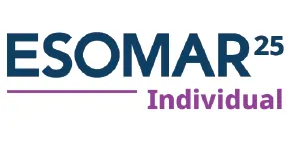
Nanoparticles are revolutionizing the pharmaceutical industry with the potential to create revolutionary advances in drug delivery technology. Researchers and scientists can enhance the efficacy and specificity of pharmacological treatments by controlling materials at the nanoscale, leading to better therapeutic effects. The tiny particles, measuring from 1 to 100 nanometers, permit targeted delivery, improved bioavailability, and reduced side effects.
- Targeted drug delivery for accurate treatment
One of the most significant benefits of nanoparticles in drug delivery is that they can target treatments. Common mechanisms of drug delivery tend to distribute the drug into the body and cause damage to healthy cells while creating side effects.
Nanoparticles industry is experiencing growth due to growing demand for nanoparticles in various areas. For example, can be engineered to selectively target cancer cells without damaging nearby healthy tissue. Targeted targeting reduces the toxic side effects of chemotherapy, such as nausea, hair loss, and immunosuppression. Nanoparticles can also be employed to deliver drugs to the brain, avoiding the blood-brain barrier, which is a major obstacle to the treatment of neurological diseases like Alzheimer's and Parkinson's.
- Greater bioavailability and drug stability.
Most drugs have low bioavailability, in the sense that very little of the drug is delivered to the targeted location of action in the body. Nanoparticles enhance the bioavailability of poorly soluble drugs by making them more soluble and stable. By encapsulating the drug in a nanoparticle, the drug is absorbed into the blood quickly, leading to greater therapeutic effects at reduced doses. In addition, nanoparticles are capable of protecting drugs from enzymes or hostile gut environment-induced degradation, which leads to loss of potency. Protection makes the drug effective for a longer duration of time and reaches the targeted location without deterioration, thereby increasing therapeutic efficacy.
- Controlled and Continuous Release
The other important aspect of nanoparticles in drug delivery is that they can provide the possibility of delivering drugs in a controlled and continuous manner for some time. Traditional drug delivery needs repeated dosing, which is a nuisance to the patient and leads to cycling of drug levels in the patient's bloodstream. Nanoparticles, on the other hand, can be engineered to release drugs in a slow process such that the drug is kept at a constant level throughout time. Such extended release can possibly increase patient compliance by decreasing the frequency of multiple doses during the day. It also can produce more uniform therapeutic effects and fewer peaks and troughs of drug concentration, decreasing the occurrence of side effects and enhancing the effectiveness of treatment. In addition to their role in medicine, nanoparticles are also making significant strides in electronics, where they are used to develop smaller, more efficient devices, such as semiconductors, sensors, and batteries, further showcasing their versatility across various industries.
- Nanoparticles in Personalized Medicine.
Nanoparticles hold enormous promise in personalized medicine, which treats based on an individual's genetic marker. Nanoparticles can customize medicine to a person's requirement for drugs in a way that ensures maximum practice of treatment with the least side effects. Drug delivery systems based on nanoparticles can be constructed so that they will respond to a patient's biomarker of disease state, enabling more targeted and therapeutic treatments.
Nanoparticles are revolutionizing drug delivery systems with unparalleled benefits in targeted therapy, enhanced bioavailability, sustained-release, and personalized treatment. The development of nanoparticles has significantly advanced, enabling more precise control over drug delivery mechanisms, increasing their effectiveness while minimizing side effects. As nanotechnology research continues to evolve, nanoparticles will increasingly become an indispensable part of maximizing treatment effectiveness and reducing drug side effects. The clinical use of nanoparticles is certain to be far greater in better and safer for various diseases, as advancement in nanoparticle continue to unlock new possibilities for improving patient outcomes.
Sources:
Research org: Science Direct
Government Agency: National Institute of Health (NIH)
Company: Open Med science






